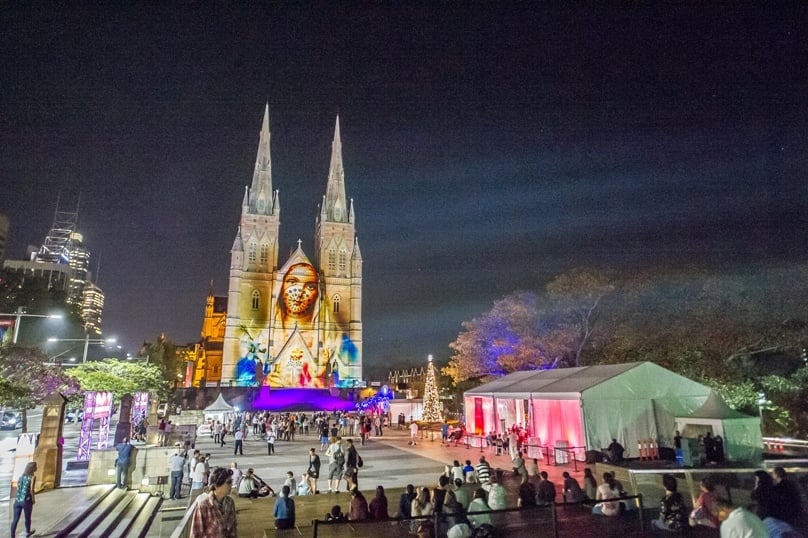
The British journalist Malcolm Muggeridge once had a remarkable experience during a trip to Calcutta for a television report on the life of Mother Teresa and her Order, the Missionaries of Charity.
He visited the House of the Dying, a large murky building in which the Sisters apply the balm of Christian love to the dying and derelict who are brought in from the streets.
The place was considered far too dark for filming, but the chance was nonetheless taken by the cameraman; and, as Muggeridge relates, the whole crew was amazed to find later that “the film, instead of, at best, showing a few dim shapes, was bathed in a soft, exquisite light in which the old battered heads of the inmates stood out like marvellous El Greco portraits”.
In Muggeridge’s eyes, this experience was of symbolic importance – a manifestation in the natural sphere of supernatural light.
For all its apparent darkness, the House of the Dying is a place of Light – of the presence of Christ as the Light of the World.
Christmas is a feast which focuses our attention on the spiritual significance of light.
The various customs that have developed over the centuries link the meaning of Christ’s birth to the coming of light.
Our Christmas trees sparkle with decorations; the windows of our homes are aglow with wreaths and lights expressive of Christian hope and hospitality; candles burn brightly in our churches; and even the so-called commercialisation of Christmas depends upon an endless kaleidoscope of coloured lights.
The theme of light is a key part of the Christian tradition. The Scriptures abound in references to it, and a recurrent contrast is drawn between darkness and light as symbols of man’s spiritual condition. The First Letter of St John, for example, states this contrast in the bluntest terms:
“Anyone who claims to be in the light but hates his brother is still in the dark. But anyone who loves his brother in living in the light. . .” (1 John 2:9-10).
Throughout the history of Christianity, there have been innumerable attempts to give artistic expression to the spiritual qualities of light.
One of the most notable examples is the phenomenon of the stained-glass window, which emerged during the Middle Ages as a distinctive form of Christian art.
The father of Gothic architecture, Abbé Suger, was especially alive to the religious properties of light, and he used to great effect the large proportion of wall space in Gothic churches that could be devoted to glass.
In the early 12th century, Suger served as the Abbot of St Denis near Paris, and he set about rebuilding the abbey church, not only for the monks but in order to attract and accommodate as many as possible of the laity.
His voluminous writings reveal that he aimed to build churches pervaded by “the wonderful and uninterrupted light of most radiant windows,” so that the minds of the people would be so illumined as to come to “an apprehension of God’s light.”
G.K. Chesterton, who began his career as an artist rather than a writer, once pointed out that a crucial difference between paganism and Christianity consists in the way each makes use of light.
Paganism, Chesterton wrote in his biography of the Victorian painter, G.F. Watts, deals always with a light shining on things, and Christianity with a light shining through them.
Paganism does not heed God’s revelation. It accepts the world as it is. It is, in Chesterton’s description, “a light which exhibits and does honour to this world, not a light that breaks in upon this world to bring it terror or comfort, like the light that suddenly peers round the corner of some dark Gothic chapel with its green or golden or blood-red eyes”.
As an art form, therefore, stained glass distinguished Christian churches from the temples of the Pharoahs or the Athenians. As the British artist, Lawrence Lee, once noted, stained glass made the windows of churches a medium of spiritual revelation instead of simply a void between massive columns.
It is possible that, as a result of familiarity, particularly in such a sun-filled continent as Australia, we underrate the spiritual power of light.
The feast of Christmas is a timely occasion on which to reawaken our sense of appreciation, and to realise how desperate is the world’s longing for supernatural light, which it is part of the Christian vocation to project to the world.
As might be inferred from our opening paragraphs, Malcolm Muggeridge nursed a deep sensitivity to the redemptive quality of light.
In Jesus Rediscovered (1969), which marked his decisive turning towards Christianity, Muggeridge called the four religious figures whom he found especially relevant to our time (Pascal, Kierkegaard, Simone Weil and Tolstoy) “lights in our darkness”.
He concluded his main essay in the book with these homiletic words:
“Fiat lux! Let there be light! So everything began at God’s mystic command: so it might have continued till the end of time – history unending – except that You intervened, shining another light into the innermost recesses of the human will, where the ego reigns and reaches out in tentacles of dark desire.
“Having seen this other light, I turn to it, striving and growing towards it as plants do towards the sun.
“The light of love, abolishing the darkness of hate; the light of peace, abolishing the darkness of strife and confusion; the light of life, abolishing the darkness of death; the light of creativity, abolishing the darkness of destruction.
“Though, in terms of history, the darkness falls, blacking out us and our world, You have overcome history. You came as light into the world, that whoever believed in You should not remain in darkness.
“The promise stands forever. Your light shines in the darkness, and the darkness has not overcome it. Nor ever will.”
This article first appeared in The Catholic Weekly on 19 December, 1984.
